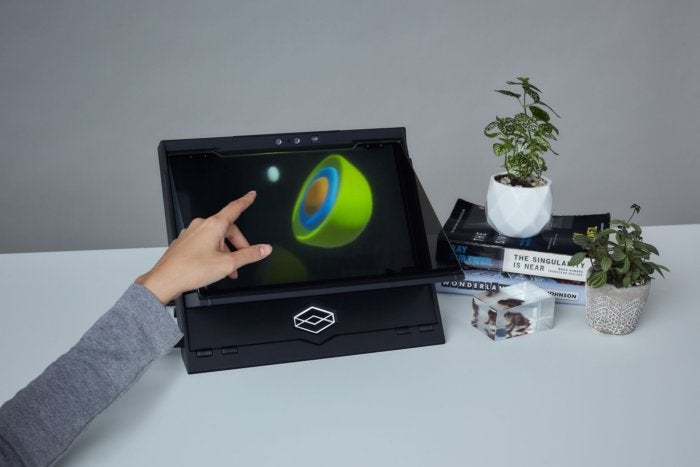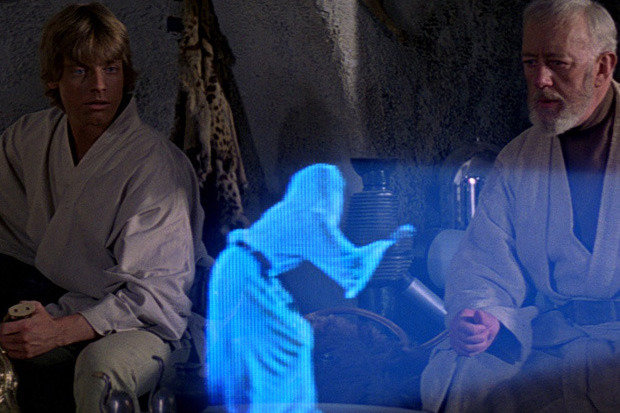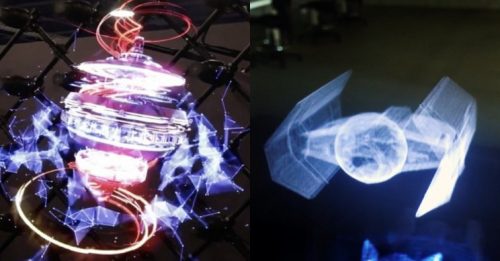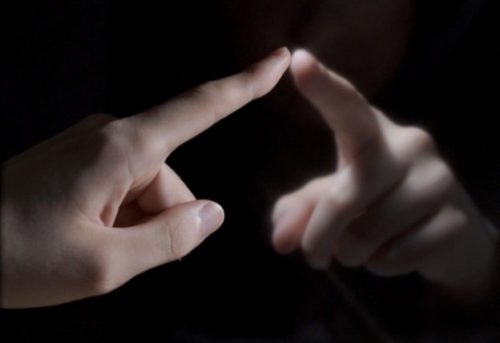Smartphone-based augmented reality (AR) and the AR headset explosion will bring 3D holograms into our lives everywhere. Meanwhile, though, the real AR hologram revolution is being ignored.
A hologram is a 3D virtual object that isn’t actually “there,” but looks as if it were, either floating in the air or standing on a nearby desk or table.
The “holo” in Microsoft’s HoloLens headset is a reference to holograms. And when we think of these future AR holograms, we think of headsets, goggles such as HoloLens or smartphones running applications created with Apple’s ARKit or Google’s ARCore.
The first is that the company unveiled the “Creator Edition” of the headset in December. Now we know what it looks like: something right off the cover of a vintage sci-fi novel.
The second reason is rampant speculation that Apple might buy Magic Leap to accelerate its own AR goggle development, speculation driven by Apple analyst Gene Munster.
In other hologram headset headlines, Dell this week announced that it will start selling, on Feb. 15, the $1,495 Meta 2 developer kits, which include the Meta 2 AR headset, for business deployments. The company said the Meta 2 is supported by several business-class Dell Precision Workstation PCs.
The AR smartphone app experience is emerging now — and the AR headset world is getting closer every day.
So that’s the story on phones and goggles, but what about that “real AR hologram revolution” I mentioned earlier? I will get to that, in the second half of this column. But first, let’s address a basic question.
What are holograms good for, anyway?
Think of hologram displays as the next step in making digital content more human-compatible.
Humans see the world in 3D. Our computer and phone screens show us a 2D version of the world. It’s artificial.
If I look at a concept car design on my laptop, people on the other side of the room see only the back of my laptop lid. That’s artificial, too.
A hologram projected in the middle of the room could show a 3D concept car for all to see, as if it were a physical object actually there.
The biggest applications for holograms are for enterprises, such as what I described above — 3D presentations for conference rooms and meetings.
And while we’re deploying holograms in the conference room, we might as well beam live remote meeting participants into the meeting — holographic telepresence.
Holograms will also dramatically improve training, design and visualization in enterprises. The ability to look at, zoom in on and manipulate 3D versions of in-progress designs radically enhances the design process.
And, of course, in the marketing department, holograms will thrill customers with experiential marketing campaigns and customer experience interactions.
We’re already seeing applications for all these emerging for smartphone, tablet and headset AR. But the real benefits come when holograms are liberated from such devices.
Holograms without phones or headsets
While dozens or hundreds of major hologram research projects are currently being developed in corporate and university labs around the world, the first examples of this new category are already shipping — or are available to corporate developers.
DeepFrame
A company called Realfiction makes an AR product called DeepFrame. The product is basically a 64-inch glass window that you look through to see the real world plus 3D holograms and AR images and text. These objects can be projected to appear a few feet away and a few feet across or miles away and miles across — for example, across an entire city.
DeepFrame enables all kinds of science fiction-like applications, such as 3D telepresence (making it appear almost as if people are in a meeting, when they’re in fact on the other side of the world).
DeepFrame is currently sold to enterprises but could eventually be used for retail experiential marketing purposes. (DeepFrame costs approximately $50,000.)
HP Zvr
Another approach to AR hologram creation is already shipping from HP. That company now sells a special 23.6-inch display product called the HP Zvr. The $4,000 device was made in a partnership with a company called zSpace.
 HP
HPThe screen works via sensors on the display that track the location of the glasses and therefore your eyes, which enables you to look at multiple sides of 3D objects by leaning to one side or the other.
A special stylus has a virtual laser coming out of the end, and it enables you to grab and manipulate the floating holograms.
HoloPlayer
Meanwhile, a startup called Looking Glass Factory is working on a display product called HoloPlayer that’s currently available for pre-order as a $750 developer’s edition that has to be plugged into a PC or a $3,000 version, also for developers, that has a PC built-in.
The HoloPlayer shows 3D holograms on the other side of a sheet of glass, and you don’t need glasses to see them.
 Looking Glass Factory
Looking Glass FactoryWhen you look straight on, you see the front of the image. Tilt your head to the side, and you see the side of the image.
These can be manipulated with natural hand gestures — reaching out, pretending to grab and turning will rotate the 3D objects. In-the-air swiping gestures also work as expected, taking you to the next image in a series.
The current version of the HoloPlayer sacrifices resolution for the 3D depth illusion. The light is projected onto 32 different depth planes, which results in a resolution of only 267 x 480.
Navion
Holographic imagery is also headed to a windshield near you. The most recent example was demonstrated at CES by a company called WayRay. Its product, called Navion, is a dashboard-mounted projector that creates the illusion of laying navigation data and turn-by-turn directions on the road itself. The company also rolled out an SDK for developers and announced that a Chinese car company would build the technology into its vehicles. WayRay is also working with Honda to develop future concepts for windshield 3D hologram products.
Beyond navigation, the Navion system identifies hazards on the fly, such as pedestrians crossing the road, and highlights them on the windshield. Navion can be controlled with in-the-air hand gestures or voice commands.
A different kind of smartphone hologram
Currently, you can get the illusion of a 3D hologram by using any number of smartphone apps created with Apple’s ARKit or Google’s ARCore.
These don’t create 3D holograms — they create a video of a hologram. They combine real-time video feeds with digital objects. The app shows you what the camera sees, then superimposes digital images on top of that real-time video feed. The hologram appears to be a few feet in front of you when you’re looking at the screen.
Researchers are working on the creation of 3D hologram displays for smartphones that project the hologram on or above the surface of the display. Future technology will be able to project 3D holograms into the air above or even around a smartphone display.
Korean display giants Samsung and LG have reportedly been working on this for years. A professor at Chungbuk National University named Kim Nam told The Korea Herald that 3D hologram smartphones are 10 to 20 years away.
The kind of smartphone hologram technology that enables floating-in-the-air 3D holograms is in our far future. But in-the-screen holograms are coming soon, according to one company.
The popular HD video camera maker RED is working on a $1,195 smartphone called the Hydrogen One that it says sports a holographic display. The screen is being developed with a startup called Leia (named after Princess Leia from Star Wars, who introduced fans to the holographic display idea in the opening scene of the original 1977 movie). Leia is a spinoff from HP Labs.
The difference between future hologram phones and the RED Hydrogen One phone is that, while the 3D effect on the RED happens when you move the phone around, nothing is projected in the air. It all stays on the screen.
Holograms will prove immeasurably useful and powerful for enterprise applications. And this power will be fully realized with technologies more advanced than today’s smartphone apps and tomorrow’s AR headsets.
The job today is to start exploring the solutions now coming online. Several of these offer low-cost development kits, which are ideal for kicking the virtual 3D hologram tires of this emerging new interface.
The world of no-smartphone, no-headset 3D holograms is here.




